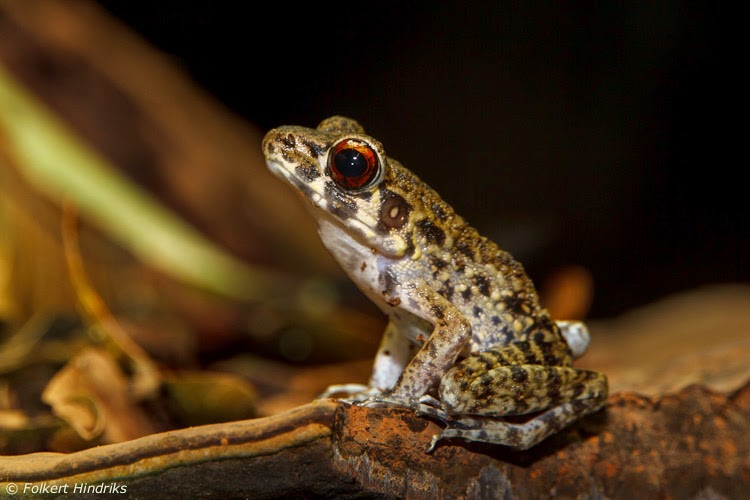I haven't been posting a lot on this blog this year. The fact of the matter is that I have still been out a few times, but just haven't found the time to document it here. So, without ado…here are some brief highlights of the last few weeks.
Mid July I spend a couple of early morning hours in the Badas area. First time that I came across a small bird wave there. In its wake I heard and spotted this male green broadbill.
 |
| Green broadbill (Calyptomena viridis) |
Obviously a nice encounter as this is a stunning species. What's more, this was also the first time I encountered a green broadbill in the peat swamp forest, so not a bad record either.
The most prominent species in the bird wave were some drongo's, two different malkoha species and a pair of crimson-winged woodpeckers. A couple of scaly-crowned babblers also passed close by.
 |
| Scaly-crowned babbler (Malacopteron cinereum) |
And the wave wouldn't be complete without a couple of hook-billed bulbuls, this is after all a peat swamp area. I am still hoping to get that killer shot one day...
 |
| Hook-billed bulbul (Setornis criniger) |
 |
| Rough-sided frog (Hylarana glandulosa) |
We also came across a stunning huntsman spider. Not sure if these awesome colors serve a specific purpose, but I did know that I wasn't going to pick it up!
 |
| Huntsman spider sp. |
A pair of bright eyes in the canopy proved to be a black flying squirrel. Only the second time I've ever seen this species.
 |
| Black flying squirrel (Aeromys tephromelas) |
 |
| Curlew sandpiper (Calidris ferruginea) |
 |
| Terek sandpiper (Xenus cinerea) |
The plovers were also showing well. Here is a greater sand plover.
 |
| Greater sand plover (Charadrius leschenaultii) |
And here 2 lesser sand plovers.
 |
| Lesser sand plover (Charadrius mongolus) |
In addition to species shown here I also saw red-necked stints, redshank, golden plovers and numerous common sandpipers and wood sandpipers in the coastal grasses and mudflats.
A final update is that I recently learned that my time in Brunei is coming to an end. End October we will move on to our next location in the United States. Still a few weeks to reach the magic 400 species in Borneo - I'll either need a good dose of luck in Brunei or another venture across the border!
Folkert, 19/08/2014
Nice Hook-billed Bulbul, Folkert and all the best in US of A.
ReplyDeleteBeen reading your blog and have learnt quite a bit on Brunei's bird species (using your blog as a reference). Good luck with your new venture in USA, introduce us to some US wildlife perhaps.
ReplyDeleteThanks guys! I am not gone yet though. Hope to still share some more birds of Brunei before I close the proverbial door.
ReplyDelete